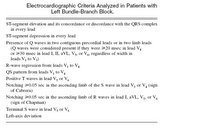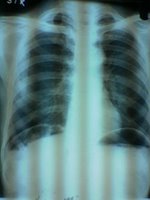Definition
The simplest definition of pulsus paradoxus is an exaggeration of the normal inspiratory decrease in systolic blood pressure. The current formal definition of pulsus paradoxus is an inspiratory fall of systolic blood pressure of greater than 10 mm Hg.
History
The reduction in pulse volume during inspiration was first described by Lomer in 1669 in constrictive pericarditis. A similar finding was described by Floyer and later by William in 1850 in bronchial asthma. Adolf Kussmaul (Freiberg, Germany) coined the term “pulsus paradoxus” in 1873 in three patients with constrictive pericarditis .Adolf Kussmaul in his 1873 manuscript ‘Ueber schwielge mediastinopericarditis und den paradoxen puls’ (Constrictive Pericarditis and the paradoxical pulse; ) described two important physical signs of pericardial disease: pulsus paradoxus and Kussmaul’s sign.
What is the paradox?
The paradox described by Kussmaul was a “pulse simultaneously slight and irregular, disappearing during inspiration and returning upon expiration” despite the continued presence of the cardiac impulse during both respiratory phases.
Others has described additional paradoxus in the same phenomenon that amidst the irregulary of the pulse palpated, the regularity with which the pulse disappeared during inspiration Moreover, another paradoxus was that the clinical method of assessment of this “pulse” is by measurement of the “systolic blood pressure”.
Methods of examination1.Palpation(Clinical) :Usually, palpation of the central pulses (carotid) is recommended for the evaluation of the character of the pulse. However, pulsus paradoxus is better appreciated in the peripheral pulses (radial). When the pulsus paradoxus is severe, it may be possible to palpate a fall (reduction in the pulse volume) during the phase of inspiration and rise during the expiratory phase.
2.By Sphygmomanometer(Clinical): To measure the inspiratory decrease in systolic blood pressure, the cuff is first inflated 20 mm Hg above the systolic pressure, then deflated until the first Korotkoff sound is heard. Initially the Korotkoff sounds are heard only during expiration. The cuff is deflated until the Korotkoff sounds are heard equally well during inspiration and expiration. The pressure at which all the Korotkoff sounds are heard should be subtracted from the systolic pressure. If the difference between these two pressures is greater than 10 mm Hg, the patient has a pulsus paradoxus of a magnitude equal to that difference.
3.Pulse oximetry waveform analysis This technique has been found useful in the neonates with cardiac tamponade. In patients with obstructive airway disease since pulse oximetry is available in ICUs and emergency departments, it is a useful non-invasive means of continually assessing pulsus paradoxus and air trapping severity.
4.Arterial waveform analysisIn the intensive care setting, where the arterial waveform is available, pulsus paradoxus can be diagnosed by visualising changes in the systolic blood pressure tracing during the inspiratory and expiratory phases of respiration.
Causes of Pulsus Paradoxus
Cardiac causes1. Cardiac tamponade2. Pericardial effusion3. Constrictive pericarditis4. Restrictive cardiomyopathy5. Pulmonary embolism6. Acute myocardial infarction7. Cardiogenic shock
Extracardiac pulmonary causes1. Bronchial asthma2. Tension pneumothorax
Extracardiac non-pulmonary causes1. Anaphylactic shock (during urokinase administration) 2. Volvulus of the stomach3. Diaphragmatic hernia4. Superior vena cava obstruction5. Extreme obesity
MechanismThere is no consensus on the underlying mechanism of pulsus paradoxus.
The major theories proposed for the mechanism in cardiac tamponade and constrictive pericarditis have included:
1. Limited transmission of negative intrathoracic pressure to intrapericardial structures compared with the extrapericardial veins, resulting in loss of the pressure gradient for cardiac filling (“impaired pressure transmission”);
2. Pooling of blood in the pulmonary vasculature during inspiration as a result of increased pulmonary venous compliance, leading to decreased left ventricular filling (“pulmonary venous pooling”);
3.Impaired filling of the left ventricle due to inspiratory filling of the right heart in a constricted pericardial space (“ventricular diastolic interdependence”); , the right ventricle distends due to increased venous return, the interventricular septum bulges into the left ventricle reducing its size (hence the name “reversed Bernheim effect”), and increased pooling on blood in the expanded lungs decreases return to the left ventricle, decreasing the stroke volume of the left ventricle.
4. Constraint of cardiac filling due to inspiratory deformation of the pericardium (“pericardial tug”);
5.Increased respiratory variability in systemic venous return in cardiac tamponade (“systemic venous return variation”).
6. Increased impedance to left ventricular ejection from negative pleural pressure (“afterload theory”);
7. Ventricular septal flattening causes impaired left ventricular systolic function (“ventricular systolic interdependence”).
8. In exacerbations of asthma and COPD, the exaggerated swings in pleural pressure may enhance the normal respiratory variation in venous return through the mechanisms discussed. In addition, hyperinflation of the lungs in these conditions may also impede right ventricular ejection causing decreased filling of the left ventricle (“pulmonary
afterload”).
What is reverse pulsus paradoxus?
Reversed pulsus paradoxus, a rise in systolic blood pressure during inspiration, was first described by Massumi et al, in patients with idiopathic hypertrophic subaortic stenosis, isorhythmic ventricular rhythm and patients of left ventricular failure on positive pressure ventilation. A rise in peak systolic pressure on inspiration by more than 15 mm Hg is considered significant. In a mechanically ventilated patient, positive pressure ventilation displaces the ventricle wall inward during systole to assist in ventricular emptying causing a slight rise in the systolic pressure during mechanical inspiration. A reverse pulsus paradoxus in mechanically ventilated patients is a sensitive indicator of hypovolaemia.
Pseudo pulsus paradoxusSalel et al described a patient of complete heart block who was misdiagnosed to have pulsus paradoxus. This was the result of forfituous synchronism of inspiration with the cyclic intermittent properly timed atrial contribution to ventricular filling characteristic of atrioventricular dissociation in this condition. This is termed pseudopulsus paradoxus. This error can be avoided by strictly adhering to the guidelines for pulsus paradoxus laid down by Gauchat and Katz: (1) The pulse must be felt in all the accessible arteries (2) There is no need for deep inspiration and (3) There must be no irregularity of cardiac action.
Causes of absent pulsus paradoxus in expected diseases
All cases of cardiac tamponade are not accompanied by pulsus paradoxus. The reasons for this are not clear in all cases, but it is likely that other compensatory mechanisms are brought into play in order to maintain a normal systemic blood pressure. The following are such conditions:
1. Aortic regurgitation (AR): In the presence of AR, the left ventricle can fill from the aorta during inspiration. Therefore, if aortic dissection produces both AR and tamponade, pulsus paradoxus may be absent.
2. Large atrial septal defect: The normal increase in systemic venous return on inspiration is balanced by a decrease in the left to right shunt, resulting in minimal change in the right ventricular volume.
3. Isolated right heart tamponade: This entity has been described in patients of chronic renal failure on hemodialysis.
4. Elevated left ventricular diastolic pressures.
5. Severe rheumatoid spondylitis or disease of the bony thorax: Wide changes in intrathoracic pressure prevented by the relative immobility of the chest wall.
6. Coexistent condition producing “reversed pulsus paradoxus”.
Importance of kussumals sign in pulsus paradoxus
Kussmaul’s sign is a paradoxical increase in the peripheral venous distension and pressure during inspiration. The major mechanism is a change in the shape of the pericardium with a resulting increase in the intrapericardial pressure and obstruction to the venous return to the heart. Compare this with the marked exaggeration of the normal expiratory increase in venous pressure that accompanies patients with pulmonary disease. Note that pulsus paradoxus may be present in both groups of patients.
References1. Lambert A. Wu , M.D et al. n engl j med 349;7, august 14, 2003.
2. Kussmaul A, Stern Mt. Pericarditis and the paradox pulse. Berl Klin Wochenschr 1873: 38.
3. Katz L N, Gauchat HW. Observations on pulsus paradoxus (with special reference to
pericardial effusions). Arch Intern Med 1924; 33: 371–93.
4. Khasnis A, Lokhandwala Y;JPGM;Year : 2002 ,Volume : 48 , Issue : 1 , Page : 46-9.
5. Kenneth C Bilchick, Robert A Wise; THE LANCET • Vol 359 • June 1, 2002
( Special thanks to Dr. Ajit Babu, Prof. of Medicine AIMS,Cochin for his valuable corrections on this articles based on which a few corrections and references being added)




